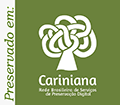MAPAS CONCEITUAIS COMO ESTRATÉGIAS DE ENSINO E APRENDIZAGEM DE QUÍMICA
DOI:
https://doi.org/10.5281/zenodo.15722194Keywords:
Aprendizagem significativa. Avaliação formativa. Ensino de Química. Hierarquização conceitual. Metodologias ativas.Abstract
The Conceptual Map (CM) is defined as a graphic representation of concepts, hierarchically related to each other, in such a way that the conceptual structure of an area of knowledge or theme makes sense, and promove the Meaningful Learning, as defined by Ausubel. On the other hand, Chemistry teaching has been characterized by the use of didactic-pedagogical methodologies based on behaviorist and technical learning theories, which favor the memorization of fragmented and decontextualized content. Thus, this research aims to identify the theoretical/methodological context, reported in Dissertations, which use CMs as a methodological resource at some stage of the teaching and learning process of High School Chemistry students. Using the Brazilian Digital Library (BDL) database and some key word, we reached 23 Master’s Dissertations (professional and academic). The first Dissertation is from 2011. For 2012, 2014, 2016, 2018, 2020 and 2023 we have two Dissertations, for each year, for 2015 and 2021 we have three and, in 2019, four. In 2013, 2017, 2019, 2022 and 2024 there was no result. Bardin's (2016) analysis of the corpus showed that CMs appear in all stages of the teaching and learning process, in different contents, series, being created in groups and/or individually, at the beginning and/or at the end of discussions, with or without quantitative analysis and are based on several learning theories, mainly the Teory of Meaningful Learning of Ausubel. Every 23 Dissertations report positive learning outcomes when CMs are used.
Downloads
Published
How to Cite
Issue
Section
License
Copyright (c) 2025 Eliane Giselle Silva, Shalimar Calegari Zanatta, Hederson Aparecido Almeida

This work is licensed under a Creative Commons Attribution 4.0 International License.
Direitos Autorais
Autores mantém os direitos autorais e concedem à revista o direito de primeira publicação, com o trabalho simultaneamente licenciado sob a licença Creative Commons CC-BY 4.0 que permite o compartilhamento do trabalho com reconhecimento da autoria e publicação inicial nesta revista.
O conteúdo relatado e as opiniões emitidas nos textos publicados nesta revista são de exclusiva responsabilidade dos autores.



